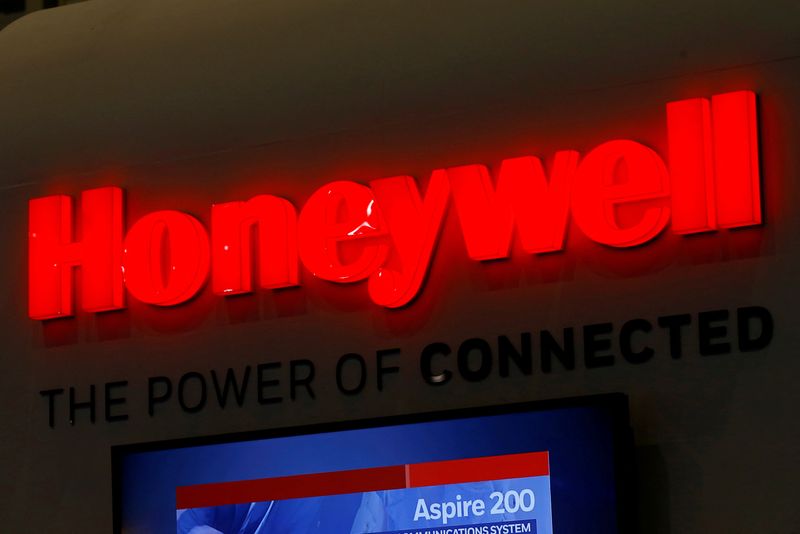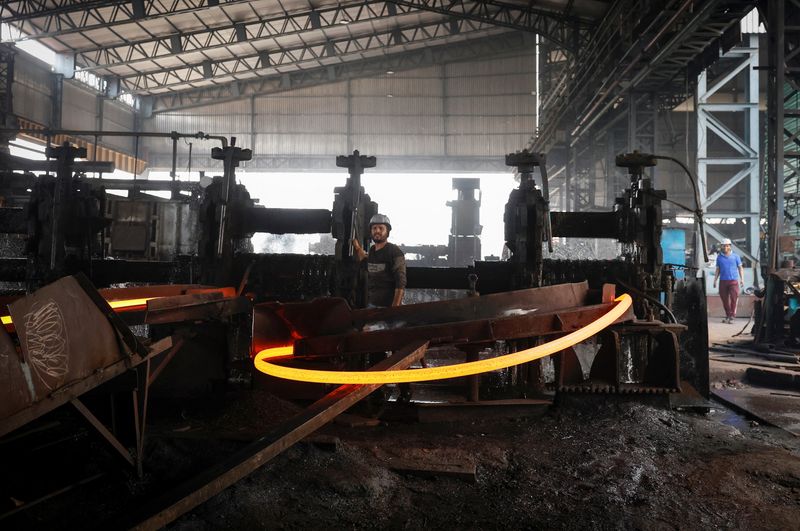By Utkarsh Shetti and Nathan Gomes
(Reuters) – Diversified conglomerates were long a fixture of the U.S. stock market landscape, with the Dow industrials bolstered by big names such as 3M, General Electric (NYSE:GE), United Technologies (NYSE:RTX) and others. But many of those companies have since broken apart, and shares of their spinoffs have surged.
Activist Elliott Investment is arguing that Honeywell (NASDAQ:HON) should be next on the list. Post-breakup shares of companies like General Electric indeed have thrived, as firms elect to separate disparate units into smaller companies.
“Breakups of conglomerates in this space have typically created significant value,” said Jake Levinson, analyst at Melius Research.
Elliott’s $5 billion-plus stake in Honeywell is one of its largest single investments; it argues that shares could rise between 51% and 75% over the next two years with a breakup, a prediction some analysts felt was overly ambitious.
General Electric, a venerated 132-year-old conglomerate that was once America’s most valuable company, completed a three-way split in April. Since then, GE shares – which now only reflect the aerospace unit – rose about 35%; the broad-market S&P 500 has gained 14.3% in that time.
United Technologies, which included Otis Corp and Carrier Global (NYSE:CARR), faced pressure to dismantle its structure from activist hedge funds.
Since completing the breakup in April 2020, shares of Carrier have more than quadrupled, while Otis has more than doubled – compared with an about 80% rise in Honeywell in that period.
Honeywell’s top boss Vimal Kapur is trying to turn around the company with smaller deals to build on its automation, aviation and energy businesses. However, the stock is still lagging its peers, with a 28% gain over the last five years, compared with the S&P 500’s about 91% rise.
When contacted, Honeywell referred to its statement on Tuesday that said it was looking forward to engaging with Elliott.
A group of 12 industrial spin-offs gained about 50% in the year following their spinoffs, outperforming the Industrial Select Sector SPDR Fund by nearly 27%, according to RBC Capital Markets data.
More broadly, the evidence is mixed. Invesco’s Spin-off ETF, a fund that tracks S&P 500 companies that have spun out from larger corporations, has trailed the market over the last decade. The ETF has risen nearly 90%, while the broader market has nearly tripled.
THE HONEYWELL QUESTION
In Elliott’s letter on Tuesday, it argued that Honeywell is weighed down by uneven execution and inconsistent financial results owing to its conglomerate structure and called for the company to “embrace simplification.”
Weakness in one segment can dent the profits of a larger company. Honeywell has been grappling with sparse demand in its industrial automation business, offsetting growth in its aerospace segment.
“Honeywell appears to be overly diversified. It is difficult to argue there are sufficient synergies between cutting-edge aerospace research and residential fire safety products to justify keeping them under one company,” said David Halliday, associate professor of strategic management at George Washington University.
Halliday, however, said that he did not share Elliott’s optimism on projected valuations, arguing that efficiency gains from a spinoff would take years to materialize.
“Honeywell is not exactly undervalued by market standards. Honeywell’s current P/E ratio of 27 is a bit shy of the market average of 30,” Halliday added.
In 2017, Honeywell managed to shrug off Daniel Loeb’s Third Point, which urged it to spin off its aerospace division, though it did spin off two smaller businesses.

Honeywell is currently worth about $150 billion, but it could be worth as much as $300 per share “conservatively” by 2026 in the event of a spinoff, said Tony Bancroft, portfolio manager at Gabelli Funds, which holds Honeywell’s shares. That equation would give it a valuation of about $195 billion.
“Both the automation and aerospace industries have huge addressable markets and it’s now up to Honeywell management to decide how much they value Elliot Management’s advice and whether or not it’s best to attack the opportunity as one company, or two,” said Paul Marino of Themes ETFs, an asset-management firm.






